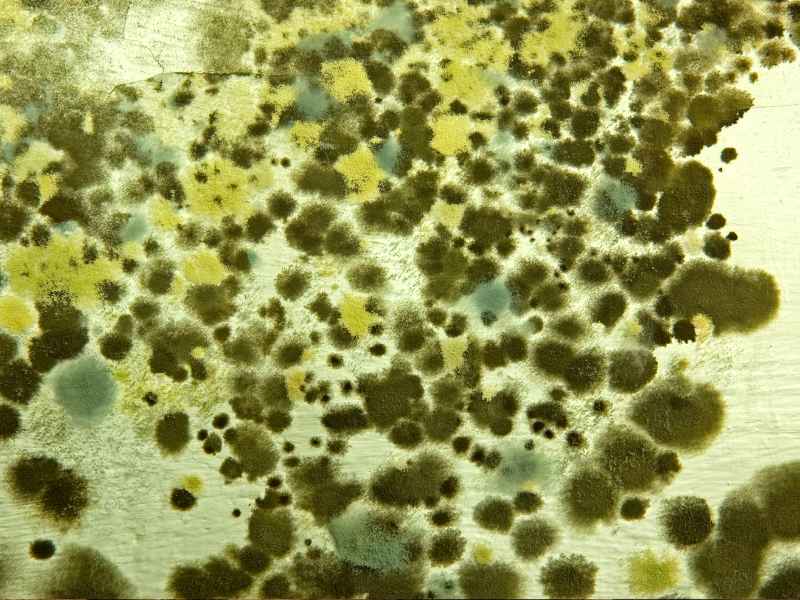Mold Encapsulation

Mold encapsulation is a technique used in mold remediation. It involves treating a mold-infested area with a sealant to prevent the spread of mold spores. This process is typically employed when removing the moldy material is impractical or impossible, such as with structural wood components1. The encapsulation process effectively blocks mold growth by using a silver-based polymer. Silver is an effective moldicide, preventing mold from growing on surfaces treated with it.
Professionals may opt for the encapsulation method for surfaces where mold cannot be entirely removed or where doing so is not viable. This involves applying a mold-resistant coating to the affected area to encapsulate and seal the existing mold. It is a protective measure that also inhibits future mold growth. However, this method must follow proper mold cleanup, and the area should be arid to prevent sealing in moisture or active mold growth.
ENCAPSULATION IN DIFFERENT ENVIRONMENTS
Encapsulation techniques must be carefully selected based on the specific conditions and materials present in an environment. This section explores encapsulation practices tailored for crawl spaces, attics, and living spaces.
CRAWL SPACES AND ATTICS
Encapsulation serves as a defensive layer against moisture for both porous and semi-porous materials in crawl spaces. These areas often contain exposed insulation and support beams that benefit from a controlled humidity environment to prevent mold and mildew growth. For attics, encapsulation can include reflective materials to enhance energy efficiency by maintaining temperature stability.
LIVING SPACES
Living spaces require encapsulation solutions that balance durability and health concerns. For porous surfaces such as wood and plaster, encapsulation often involves a breathable yet protective coating that ensures indoor air quality is not compromised. Semi-porous materials like brick and concrete can be treated with sealants that protect against moisture while maintaining the integrity of the material’s surface.
Mold Encapsulation Essentials For Effective Mold Remediation
Mold encapsulation is a technique used in mold remediation. In this process, a mold-infested area is treated with a sealant to prevent the spread of mold spores. This process is typically employed when removing the moldy material is impractical or impossible, such as with structural wood components. Sometimes, it is impossible to remove mold-affected areas during the mold remediation process, and they must be sealed in place.
Mold sealant is a paint-like substance designed to seal a moldy surface, like wood, from which the mold cannot be entirely removed. Encapsulating mold this way is generally only done when the moldy material cannot be replaced. Most of the time, it’s better to remove the moldy material if it cannot be adequately cleaned.
Mold Encapsulation: What is a Sealant?
Sealant resembles paint (or it can be clear, as in the picture above) and can be applied with a paintbrush, roller, or sprayer. However, unlike regular paint, it contains antimicrobial ingredients that help fight mold. It also seals any mold remaining on a material, like wood, so it cannot continue growing and spreading. This process is known as encapsulation.
It’s important to understand that regular paint will not have the same effect. It will cover up any remaining mold, making it more challenging to see the mold when it grows and spreads. It will make the situation worse in the long run.
When is Mold Encapsulation Necessary?
Removing mold from some porous and semi-porous materials, including wood, drywall, ceiling tiles, carpeting, and fabrics, is impossible. When performing mold remediation, these materials are usually removed from the home, discarded, and replaced with new materials. Removing a material contaminated by mold is sometimes extremely difficult or impossible. For instance, drywall and insulation can be easily removed and replaced, but the wooden studs inside a wall are another matter. In such cases, as much mold as possible is removed from the surface of the wood (sometimes by sanding the wood), and the wood is cleaned as thoroughly as possible with a microbial product and then treated with a mold sealant.
Risks of Mold Encapsulation
There are some risks involved with the process. To remove as much mold from the surface as possible, wooden surfaces may be sanded. However, sanding moldy wood sends hundreds or thousands of tiny mold spores into the air, where they are easily inhaled. Strict safety precautions must be taken to prevent breathing in mold spores, which can lead to respiratory problems and other illnesses. For this reason, only mold removal professionals should sand moldy surfaces.
Homeowners can clean surfaces thoroughly and apply a mold sealant if they don’t need sanding.
ENCAPSULATION VS. REMOVAL
Encapsulation should not be confused with mold removal. Removal involves physically removing all mold-infested materials from the structure. However, encapsulation is an alternative when removal is impractical or likely to cause further damage to the property. A specialized sealant is applied over the mold during encapsulation, which becomes inert and contained.
BENEFITS OF ENCAPSULATION
Encapsulation offers several benefits over traditional removal techniques. It is often less intrusive and can be completed more quickly, reducing downtime for homeowners or building occupants. Furthermore, encapsulation can act as a long-term preventative measure by providing a seal that contains existing mold and helps protect against future microbial growth on the treated surfaces.
After encapsulating mold, it is crucial to conduct a thorough Quality Inspection and establish a rigorous Maintenance and Monitoring program to ensure the long-term effectiveness of encapsulation.
QUALITY INSPECTION
Immediately following the encapsulation, professionals must inspect the treated areas to ensure all wooden studs and surfaces are fully covered with no missed spots. During this inspection, they should verify that the encapsulant has adequately adhered to and created a seamless barrier over the mold. A detailed checklist, including visual examination and surface sampling, can ensure that the encapsulant has been applied correctly.
When to Consult a Professional
If you have materials from which it is difficult to remove mold and you think encapsulating the mold might be the answer, we recommend consulting a mold removal professional first. You may need a professional to handle the job, but even if you decide to do the work yourself, we can provide valuable advice; please remember that we are always here to help you. Our consultations are not just free, but they are also a valuable opportunity for us to address your concerns and provide the best service possible.






